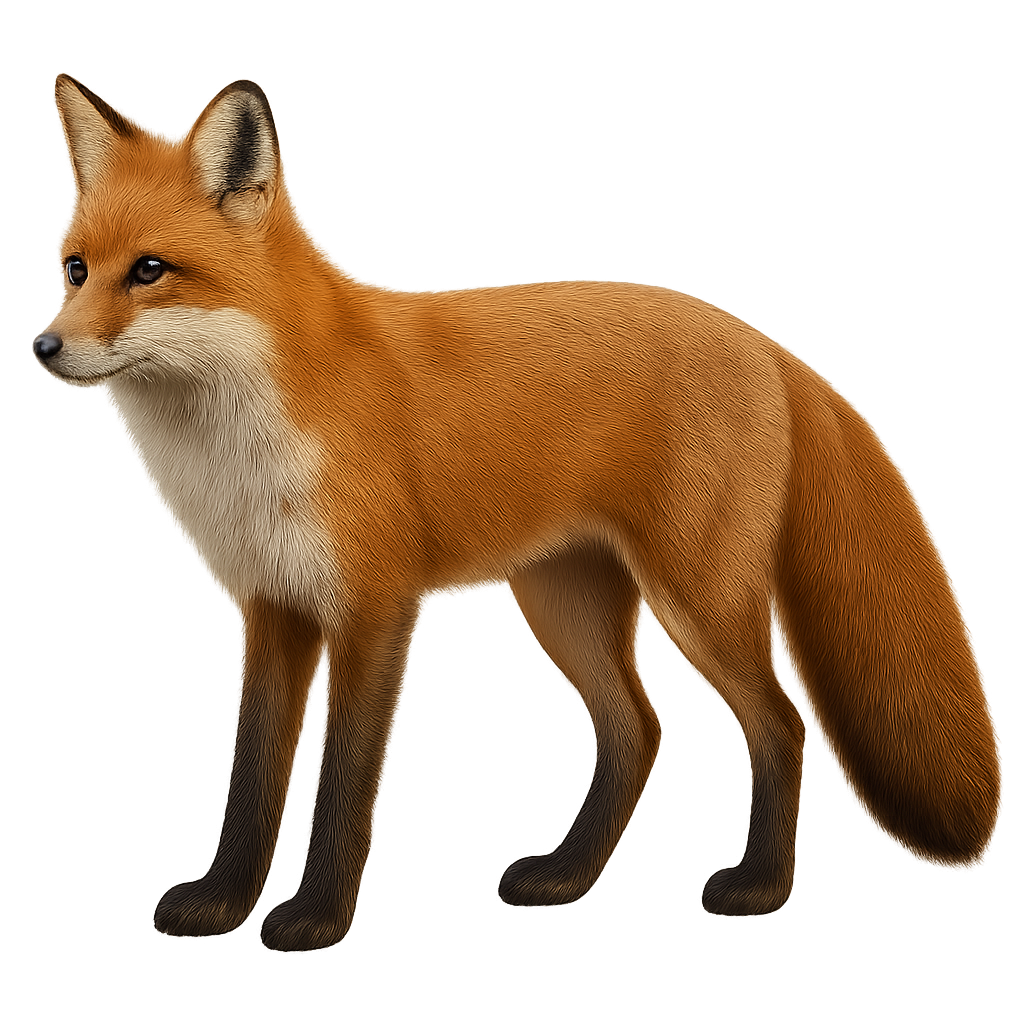Your wildlife photography guide.
Explore the red fox in detail, study its behavior, prepare your shots.
Where to observe and photograph the red fox in the wild
Learn where and when to spot the red fox in the wild, how to identify the species based on distinctive features, and what natural environments it inhabits. The WildlifePhotographer app offers tailored photography tips that reflect the red fox’s behavior, helping you capture better wildlife images. Explore the full species profile for key information including description, habitat, active periods, and approach techniques.
Red fox
Scientific name: Vulpes vulpes

IUCN Status: Least Concern
Family: CANIDAE
Group: Mammals
Sensitivity to human approach: Shy
Minimum approach distance: 30 m
Rut period: January to March
Gestation: 51-53 jours
Births: March to May
Habitat:
Varied habitats: forests, countryside, and urban areas
Activity period :
Mainly active at night, generally discreet during the day.
Identification and description:
The Red Fox is a small carnivore primarily found in forests, meadows, and agricultural areas of Europe, Asia, and North America. It measures about 45 to 90 cm in length, with a tail of 30 to 50 cm, and weighs between 3 and 10 kg. Its fur is typically reddish with white underparts and on the legs, and its tail is bushy with a white tip. The Red Fox is an opportunistic and omnivorous animal, feeding on small mammals, birds, insects, fruits, and berries. It is primarily active at dusk and night. While its population remains relatively stable in many regions, it can be threatened by habitat loss, vehicle collisions, and diseases.
Recommended lens:
400 mm – adjust based on distance, desired framing (portrait or habitat), and approach conditions.
Photography tips:
Use a telephoto lens to photograph from a distance, respecting the discreet nature of the species.
Photograph early in the morning or late in the afternoon, when the soft light highlights the shiny coat and details of the red fox.
Look for it in various habitats, such as forests, meadows, cultivated fields, and urban areas, where it may feed on small animals or food scraps.
Be patient and discreet to avoid disturbing its natural behavior. As the fox is often active at dawn and dusk, it is important to remain silent and avoid sudden movements.
The Red Fox is a protected species in many regions. While it is widespread, it is essential to respect its space, especially when it is raising its young or using sensitive habitats.
The WildlifePhotographer App is coming soon!
Be the first to explore the best nature spots, track rutting seasons, log your observations, and observe more wildlife.
Already 1 432 wildlife lovers subscribed worldwide

